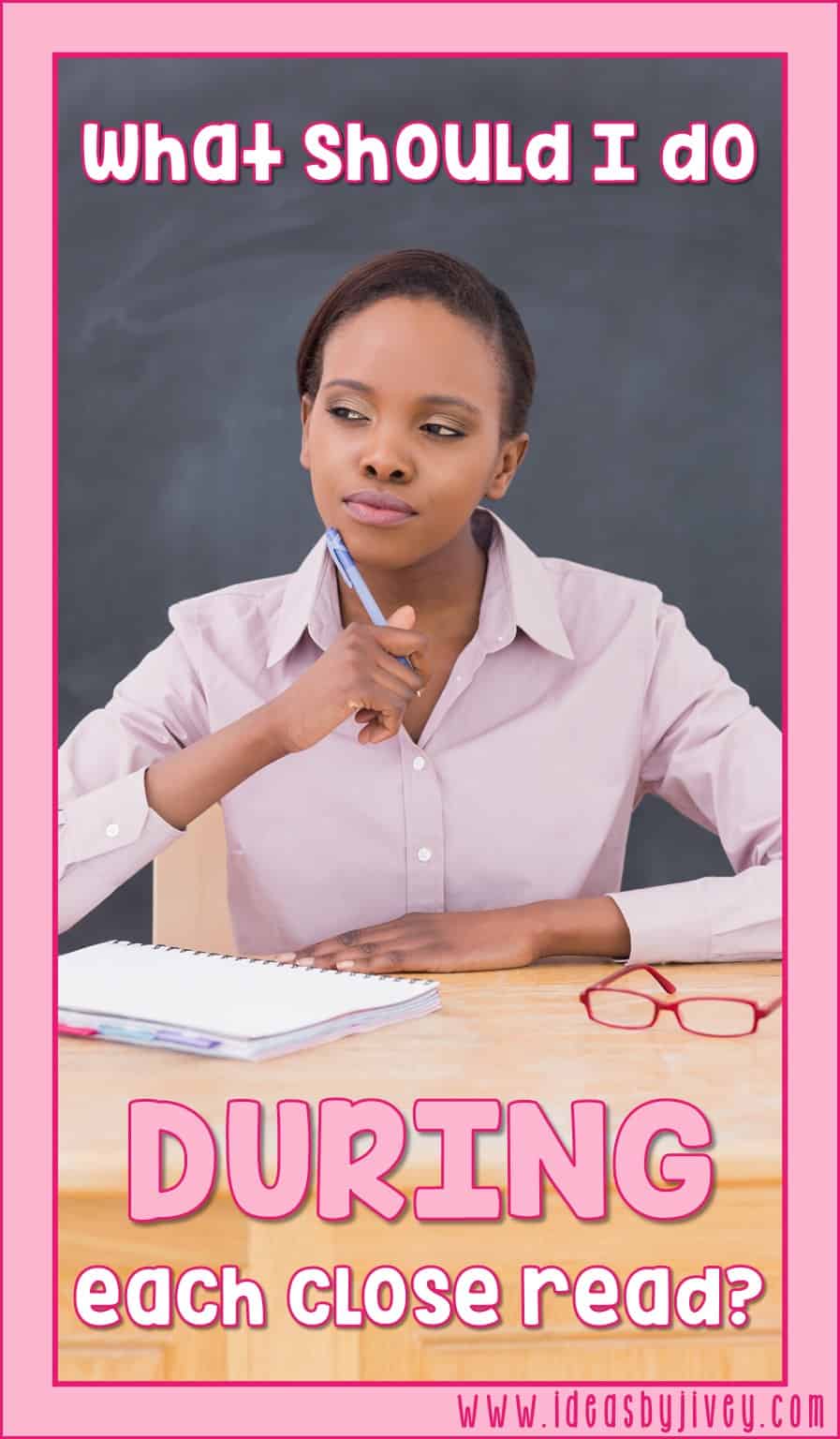Menu
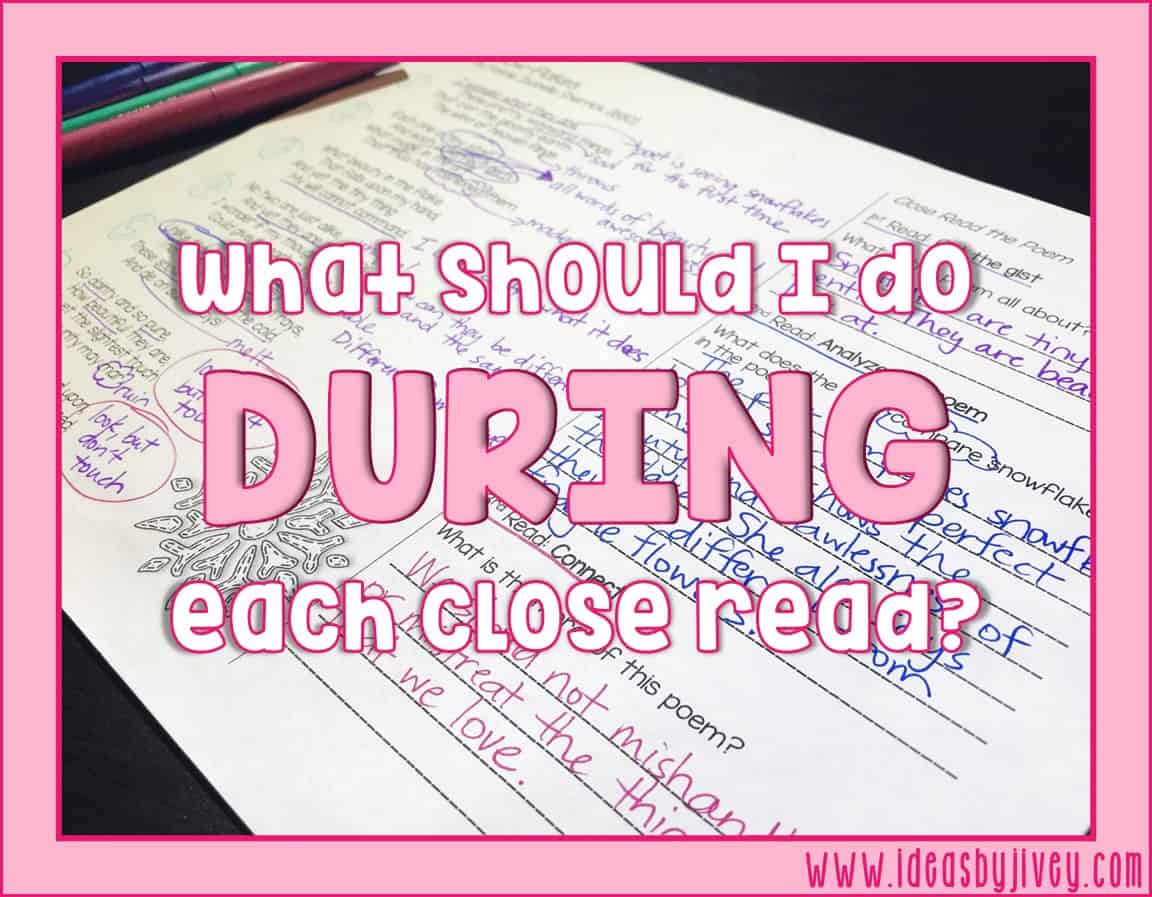
Honest talk here.
Close reading turns those mini-lessons into MAXI-lessons if you try to fit in all that you want to do with a text in one day.
Let’s look at why:
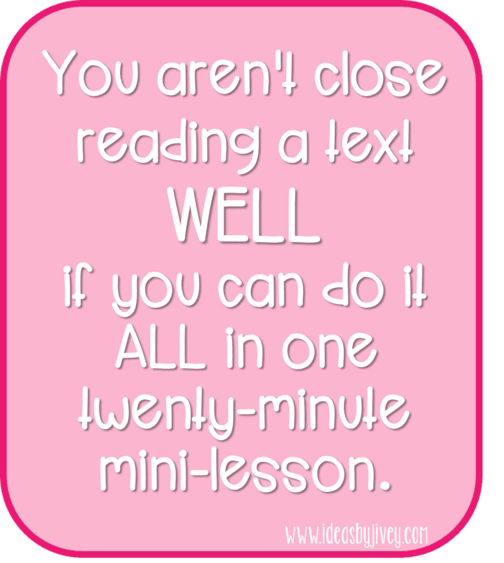
Even though close reading is done with short texts, the time it takes to dig deep shouldn’t be short because…
In other words, you aren’t close reading a text WELL if you can do it ALL in one twenty-minute mini-lesson.
That doesn’t mean you shouldn’t do close reading as mini-lessons! Break up the tasks over several days to dive deep into a text. As you saw in my last post about annotation, the first read is always the longest and often can’t/shouldn’t be done in a twenty-minute mini-lesson (that doesn’t mean always!!) because of the time it takes to dissect the vocabulary, annotate, and discuss the text.
Each subsequent read should focus on just a portion or a chunk of the text, so these reads are perfect for mini-lessons!
What can be done in 20 minutes? After students have completed the first read, the following lessons should:
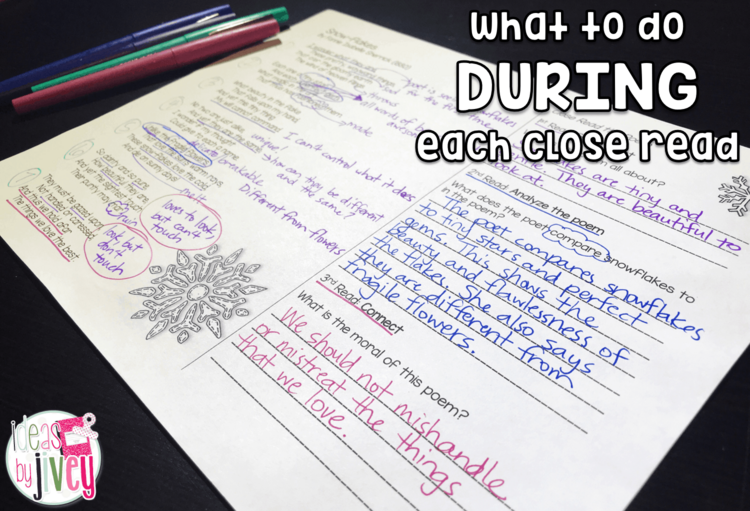
I am a bit of an admitted poetry nerd. I am going to share how I would use a poem for at least three days in the classroom to practice close reading, but keep in mind, all of these steps can be done with ANY text!
The first thing you want students to do in a close read is to identify “chunks” or sections of text to read one at a time. This helps to not get too overwhelmed. In an article or non-poetry passage, it might already have great reading chunks with paragraphs. With poetry, if the poem is written in stanzas, this is a great way to break up the poem… AND you can hit that “identifying stanzas and verses” standard.
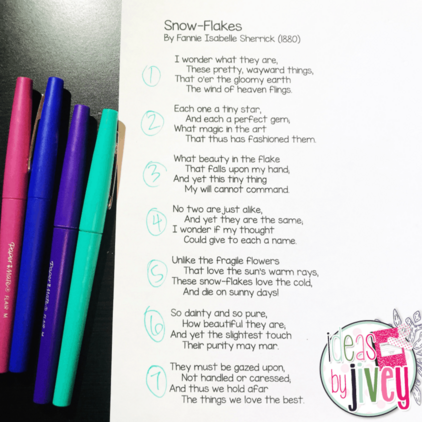
Just as I shared in the post about annotation, during the first read, students should be writing down thoughts, confusing words or concepts, and summarizing the sections for overall understanding. It is no different in a poem! When working on this poem as a class, and doing this as a mini-lesson, I would have students read and annotate (if they are familiar with the routine already- NOT if this is the first time they are annotating) on their own, and then I would read and annotate in the form of think-alouds, while also allowing the students to share ideas from their own papers to discuss. You can see my own annotations below:
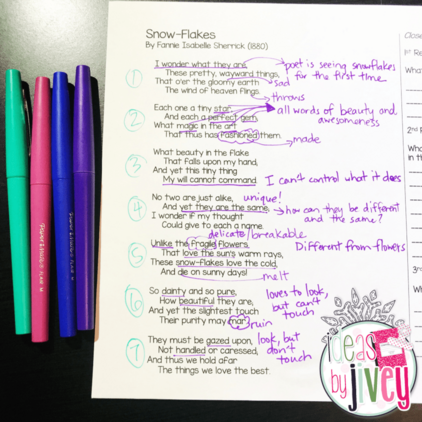
Students should have a purpose for each time they close read a passage, article, or poem. The first read should always focus on key ideas and details, such as getting the gist/summarizing/identifying the main idea. After all, when you read something for the first time, you are only trying to grasp and understand the idea of it, right?
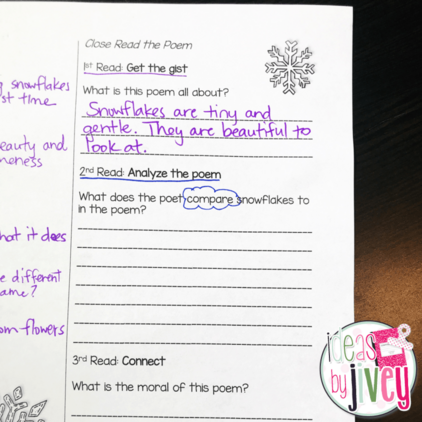
If you are using this poem for mini-lessons, in order to keep each lesson “mini,” you’d do the second read in a new lesson.
Before beginning the mini-lesson, I always have my students discuss with a partner or small group the key ideas and details of the poem from the previous lesson, just to get their brain going again about the poem.
Generally, the second read should focus on craft and structure. You can see in the image above, for this poem, I want students to find figurative language (craft) in the poem by identifying items to which the poet compared snowflakes.
I would allow students to share their thoughts and “lead” my pen for this mini-lesson. If they were missing the mark, of course, I would guide them to the metaphors by asking leading questions such as, “Are snowflakes really stars?” You can see where I identified the figurative language in blue below. (I liked to use different colors on the page I presented to students for each mini-lesson so they could see the “current” annotations for that close read.)
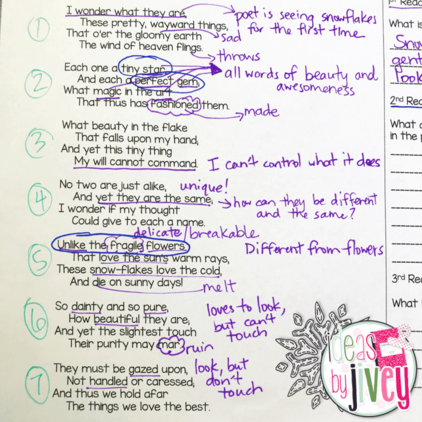
I would then have the students work with a partner or in a small group to use what we found in the poem to answer the question, then we would come back and discuss their responses as a whole group.
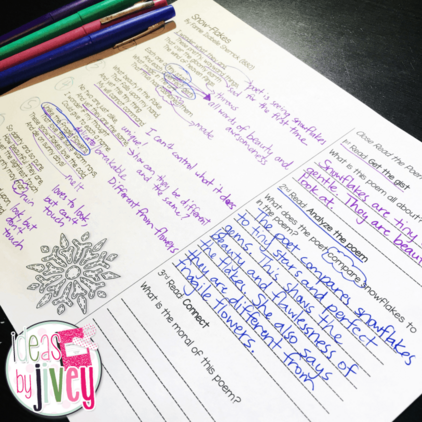
For the third mini-lesson, and/or the third read of the poem, they will have a new purpose. The third read should go deeper into the meaning of the text you are reading, so focusing on integration of knowledge and ideas is a good requirement that will allow students to analyze the text (and sometimes multiple texts).
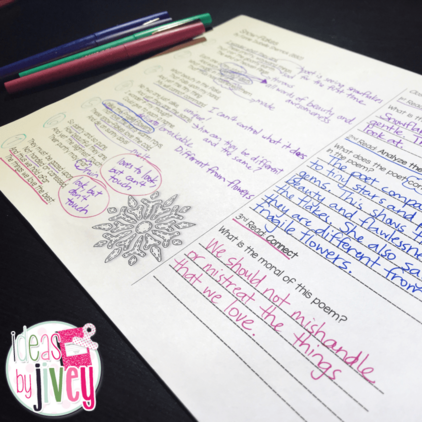
I would work with my students to identify the moral by returning to the notes we made in the last two stanzas. Again, I would want students to talk with a partner or small group to form a good response, and then we would discuss it together as a class to make sure everyone is on the right page.
For more tips on close reading poetry specifically, check out these posts (with bonuses)!
Close Reading Poetry, Step-by-Step
Close Read Poetry Bonus Lesson
I will be sharing more about close reading, finding and citing evidence with text-dependent questions, and writing constructed responses in future posts!
Make sure to check out other “Let’s Talk Test Prep” posts!
Pin For Later:
